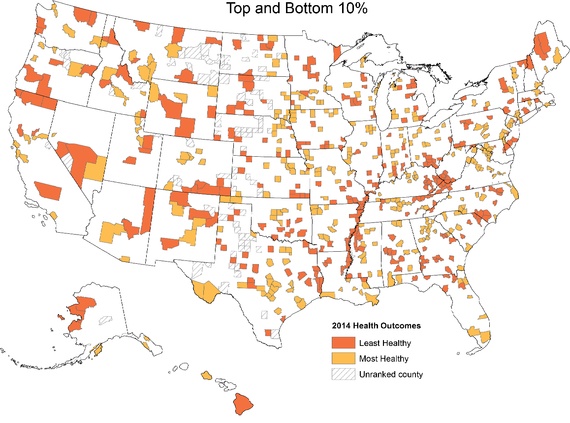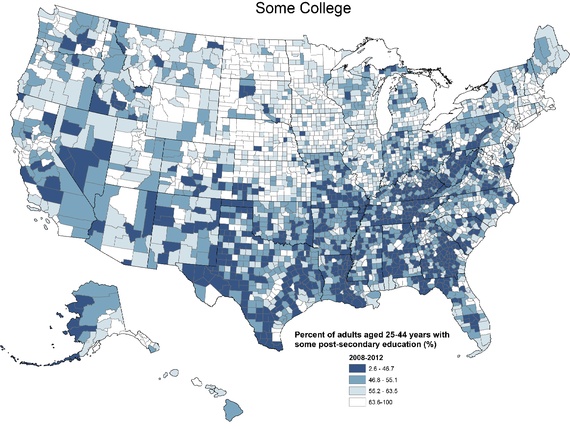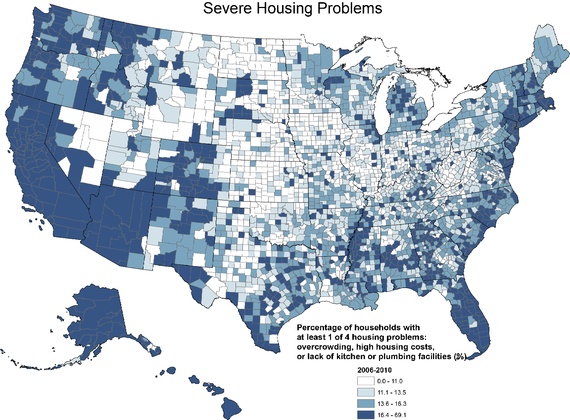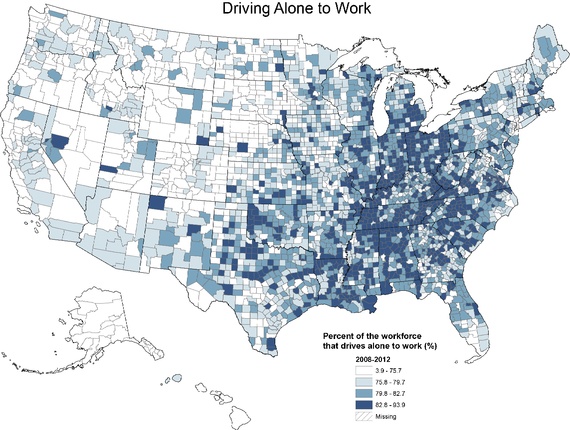How college education, housing, and transit affect the health status of Americans

© Robert Wood Johnson FoundationTop and bottom ten percent least-healthy counties, by state.
about how moving from West Virginia to Connecticut is like moving from Mauritius to Belgium, as far as life expectancy goes.
But a new report shows just how much variation in quality of life there is
within each state, if you look at the most- and least-healthy counties. In Kentucky, for instance, the percentage of children living in poverty ranges from 8, in Oldham county near Louisville, to 57 percent in nearby Owlsey county, where the local farming and mining economies have dried up.
"The least healthy counties in the U.S. have twice the premature death rates (years of life lost before age 75), twice as many children living in poverty, and twice as many teen births compared to the healthiest counties," write the authors of a new ranking by the Robert Wood Johnson Foundation and the University of Wisconsin's Population Health Institute.
The researchers also found that a number of non-medical factors, such as housing, transit, and college attendance, are associated with health behaviors and outcomes. Here's a look at how those elements break down by county:
College-educated people tend to live longer and healthier lives. The report defines "some college," as the percentage of the population between the ages of 25 and 44 with some post-secondary education. From the map below, it's clear that this is particularly uncommon in the southern United States, but there's a huge range. In Texas, rates of "some college" vary from 25 to 80 percent among the counties.

© Robert Wood Johnson FoundationSome college
Housing is interesting because it can
both cause poor health and simply be associated with it. Lead-based paint, poor insulation, allergens like mold or dust, and poor air quality can all spark or exacerbate health problems. And people with low incomes are more likely to live in shoddy housing.
The report defines a "severe housing problem" as "the percent of households in a county with one or more of the following housing problems: overcrowding; lacks adequate facilities to cook, clean, or bathe; and/or severe cost burden." That description applies to a fifth of U.S. households overall, but the West and East Coasts, Alaska, and parts of the South are worst off.

© Robert Wood Johnson FoundationSevere housing problems
Driving to work, the researchers point out, "leads to thousands of deaths and injuries and exposes us to air pollution. It also contributes to physical inactivity and obesity." It's even worse when people commute alone, since that contributes to social isolation, which also hurts health.
Three-quarters of American workers drive to work alone, and more people do so in eastern counties than in western ones:

© Robert Wood Johnson FoundationDriving alone to work
Are the social determinants of health getting any better?
The report paints a mixed picture. Rates of uninsurance and unemployment have decreased steadily in recent years and obesity seems to have flatlined. However, the proportion of children living in poverty climbed to 23 percent in 2012, from 18 percent in 2007.
But as the maps above clearly show, whether you've noticed that change or not depends on the county you live in.
Find the healthiest and least-healthy counties in your state
here.
Olga Khazan is an associate editor at The Atlantic
, where she covers health.
Reader Comments
to our Newsletter